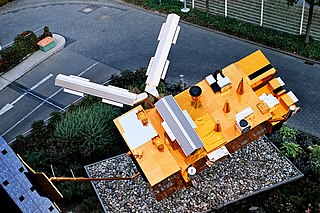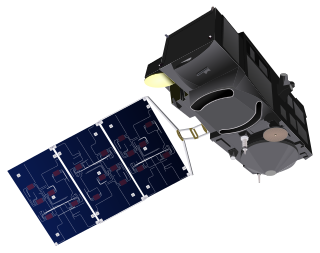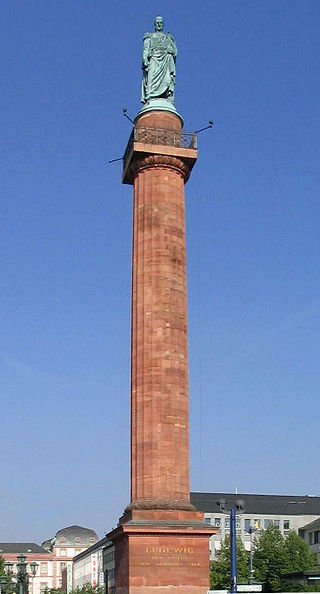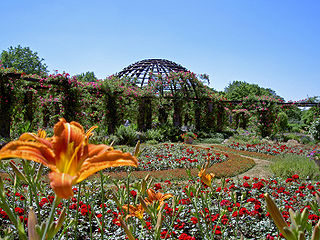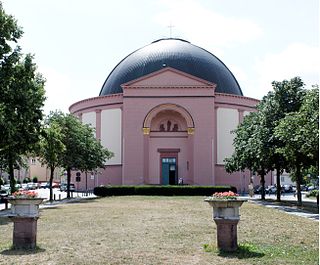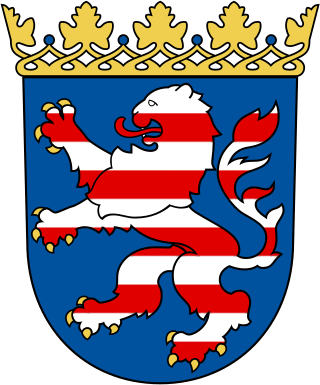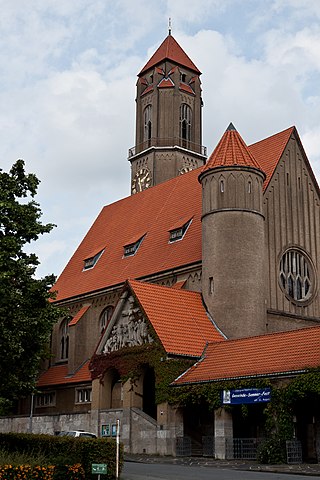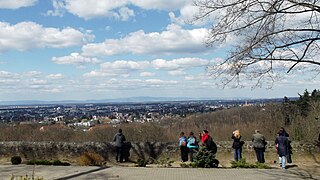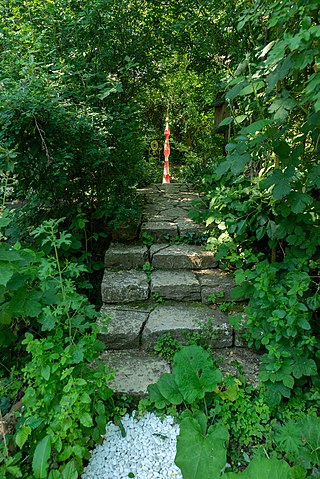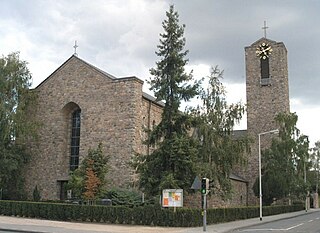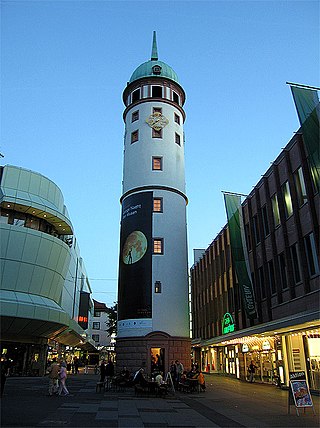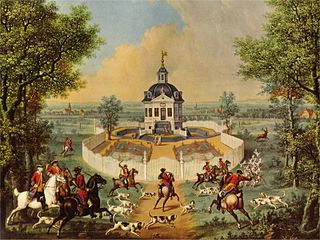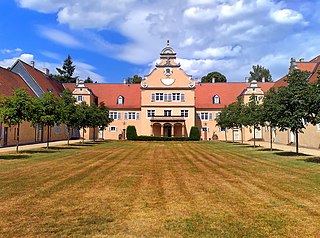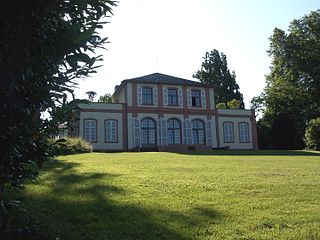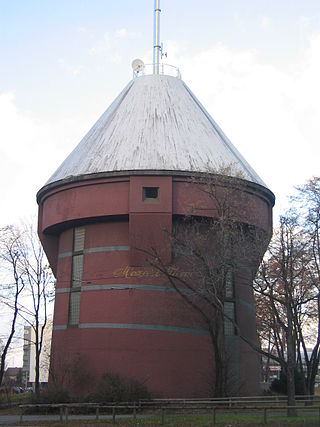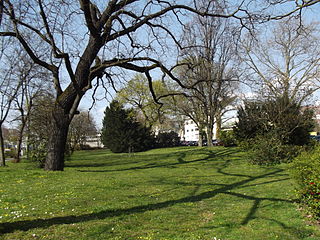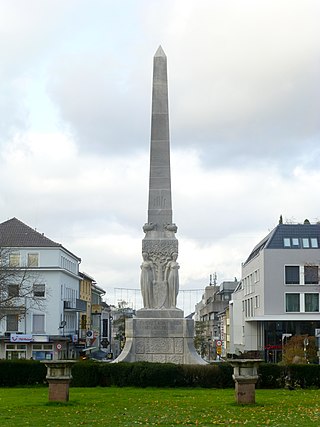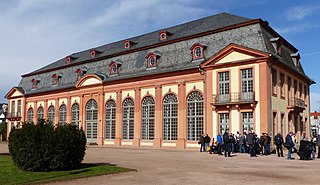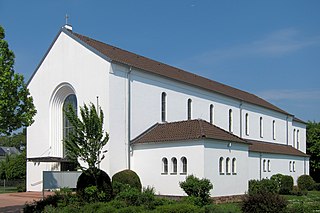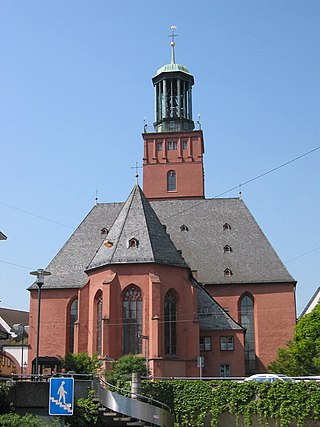26 Sights in Darmstadt, Germany (with Map and Images)
Legend
Premium Sights
Book tickets, guided tours and activities in Darmstadt.
Guided Free Walking Tours
Book free guided walking tours in Darmstadt.
Welcome to your journey through the most beautiful sights in Darmstadt, Germany! Whether you want to discover the city's historical treasures or experience its modern highlights, you'll find everything your heart desires here. Be inspired by our selection and plan your unforgettable adventure in Darmstadt. Dive into the diversity of this fascinating city and discover everything it has to offer.
Sightseeing Tours in Darmstadt1. Residential Palace Darmstadt
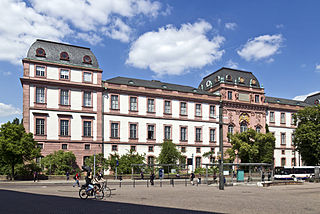
The Residential Palace Darmstadt is the former residence and administrative seat of the landgraves of Hesse-Darmstadt and from 1806 to 1919 of the Grand Dukes of Hesse-Darmstadt. It is located in the centre of the city of Darmstadt. The palace consists of an older Renaissance part and an 18th century Baroque part.
Wikipedia: Residential Palace Darmstadt (EN), Heritage Website
2. Model of Metop
Metop is a series of three polar-orbiting meteorological satellites developed by the European Space Agency (ESA) and operated by the European Organisation for the Exploitation of Meteorological Satellites (EUMETSAT). The satellites form the space segment component of the overall EUMETSAT Polar System (EPS), which in turn is the European half of the EUMETSAT / NOAA Initial Joint Polar System (IJPS). The satellites carry a payload comprising 11 scientific instruments and two which support Cospas-Sarsat Search and Rescue services. In order to provide data continuity between Metop and NOAA Polar Operational Environmental Satellites (POES), several instruments are carried on both fleets of satellites.
3. Model of Sentinel-3
Sentinel-3 is an Earth observation heavy satellite series developed by the European Space Agency as part of the Copernicus Programme. As of 2024, it consists of 2 satellites: Sentinel-3A and Sentinel-3B. After initial commissioning, each satellite was handed over to EUMETSAT for the routine operations phase of the mission. Two recurrent satellites, Sentinel-3C and Sentinel-3D, will follow in approximately 2025 and 2028 respectively to ensure continuity of the Sentinel-3 mission.
4. Ludwigsmonument
The Ludwig Monument is a monument to Ludewig I, the first Grand Duke of Hesse and the Rhine, and a landmark of the city of Darmstadt. It stands on the Luisenplatz in Darmstadt, which is named after Grand Duchess Luise of Hesse-Darmstadt, the wife of Ludewig I.
5. Park Rosenhöhe
The Rosenhöhe Park is a historic park on a hill in the east of Darmstadt. Its special features include a rosarium with a rose dome on the top of the hill as well as the mausoleums and tombs of the Hessian princely house. On the edge of the park are also the buildings of the New Artists' Colony Rosenhöhe.
6. Ludwigskirche
St. Ludwig is the main Catholic church of Darmstadt. Its striking dome rises in an exposed position above the city centre at the end of the boulevard-like Wilhelminenstraße. In the vernacular, the Ludwigskirche is also known as the cheese bell or "Kääsglock".
Wikipedia: St. Ludwig (Darmstadt) (DE), Website, Heritage Website
7. Kleines Haus
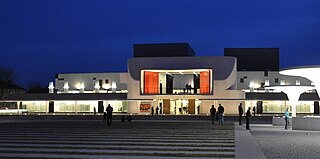
The Staatstheater Darmstadt is a theatre company and building in Darmstadt, Hesse, Germany, presenting opera, ballet, plays and concerts. It is funded by the state of Hesse and the city of Darmstadt. Its history began in 1711 with a court theatre building. From 1919 it was run as Landestheater Darmstadt. The present theatre was opened in 1972 when the company was named Staatstheater.
8. Haus der Geschichte
The Hessian State Archive Darmstadt (HStAD) is one of the departments of the Hessian State Archives and is based in Darmstadt at Karolinenplatz. It serves as a regional archive alongside the Hessian Main State Archive in Wiesbaden and the Hessian State Archive in Marburg. The Hessian State Archive Darmstadt is responsible for southern and parts of central Hesse.
9. Pauluskirche
Die Pauluskirche ist eine evangelische Kirche in Darmstadt. Sie wurde in den Jahren 1905–1907 nach Entwürfen des Architekten und Professors für Städte- und Kirchenbau Friedrich Pützer errichtet.
10. Ludwigsturm
The Ludwigshöhe, also known as Bessung's local mountain, is a hill and a historical excursion site in the south of Darmstadt and the location of the Ludwigsturm observation tower and the Darmstadt public observatory.
11. Vortex Garten
The Vortex Garden is a privately owned public garden in the Hessian city of Darmstadt (Germany). It is a pantheistic permaculture garden at the art nouveau area of Mathildenhöhe and alludes to Viktor Schauberger’s discovery of “levitational force” through artistic depictions by internationally renowned sculptors including John Wilkes, Jacopo Foggini, Jerome Abel Seguin and Hyesung Hyun. The garden is the private property of Henry Nold of Darmstadt, but is open to the public. The garden was planted and designed by a team around the owner and conceptual artist Henry Nold.
12. Liebfrauenkirche
The Church of Our Lady in Bessungen is a Catholic church in Darmstadt, Germany. Its striking church tower rises in an exposed position east of the Orangery on Klappacher Straße. The parish has around 4000 Catholics.
13. Weißer Turm
The White Tower is a former corner tower of the medieval city fortifications and a landmark of the city of Darmstadt. It was built as a defensive tower. After the city wall had lost its value for the defense of the city, the tower was redesigned as a bell tower in 1704 and largely retained its present appearance. It was largely destroyed in an air raid on 11 September 1944 and has been rebuilt from the ruins since 1949. He is currently being looked after by a circle of friends who offer regular guided tours. Since 1997 it has also served as a gallery.
14. Dianaburg
The Dianaburg, formerly also known as Dianenburg, was a baroque hunting lodge within the boundaries of the village of Arheilgen, which today belongs to Darmstadt. It was built in 1765 and demolished in 1808. In its place stands a small pavilion from 1836, which bears the same name.
15. Observatorium Ludwigshöhe
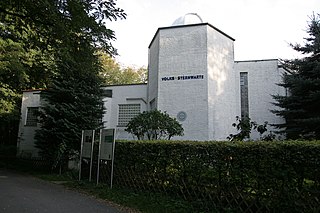
The Volkssternwarte Darmstadt is a non-profit association with the aim of promoting the general interest in astronomy and space travel. The association has about 200 members and regularly organizes lectures, seminars and children's events for the public, in which various topics from astronomy and space travel are discussed. In addition, there are public solar observations and observation evenings. Even under the less than optimal conditions in the Darmstadt city area, the sky shows a large number of fascinating objects.
16. Jagdschloss Kranichstein
Jagdschloss Kranichstein is a palace in Kranichstein, now part of Darmstadt, Hesse, Germany. It was built north of Darmstadt from 1578 as a Jagdschloss, a hunting lodge for George I, Landgrave of Hesse-Darmstadt. It served also as a summer residence. In 1917, it became a museum of hunting. From 1946, it was the first location of the Darmstädter Ferienkurse.
17. Prinz-Emil-Palais
The Prinz-Emil-Schlösschen is a small garden palace in Darmstadt-Bessungen. It was built from 1775 to 1778 on behalf of its first owner, Friedrich Karl von Moser, in a central location in a garden landscape built in 1772 according to the English model, today's Prince Emil Garden. Burned out after the Second World War and the bombing of Darmstadt, it was renovated by 1950 and today serves as a neighbourhood house for the inhabitants of Bessung.
18. Mozartturm
The Mozart Tower is located at Rheinstraße 111 in Darmstadt. It was built in 1936 and is a listed building. It is an air raid shelter and anti-aircraft bunker, which was also used as an alternative control center for the civil defense. Originally, the flak tower was named after the German military aviator Manfred Freiherr von Richthofen ("Richthofenbunker"). During the Second World War, an anti-aircraft gun was located on its roof, which was used in particular to defend the main station and the western entrance to the city. The construction of the tower corresponds to the Dietel design, a further development of the Zombeck design, which was patented in 1937.
19. Model of Sentinel-6

The Sentinel-6 mission, also known as the Jason Continuity of Service Mission (Jason-CS), is a satellite mission jointly developed and operated by NASA, the European Space Agency (ESA), the European Organization for the Exploitation of Meteorological Satellites (EUMETSAT) and the National Oceanic and Atmospheric Administration (NOAA). Sentinel-6 consists of two identical satellites.
20. Landgraf-Philipps-Anlage
The Landgraf-Philipps-Anlage is a small park in Darmstadt, Germany. The 200-metre-long and 40-metre-wide complex was named after Landgrave Philipp. It is bordered by the street of the same name, Landgraf-Philipps-Anlage, and Fritz-Bauer-Straße.
21. Evangelische Kirche
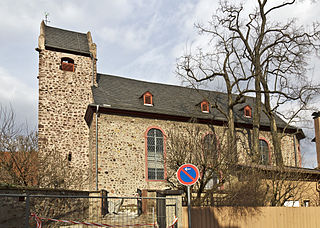
The Evangelical Church of Wixhausen is a church in Darmstadt-Wixhausen, Germany. The parish belongs to the deanery of Darmstadt in the Starkenburg deanery of the Evangelical Church in Hesse and Nassau.
22. Bacchusbrunnen
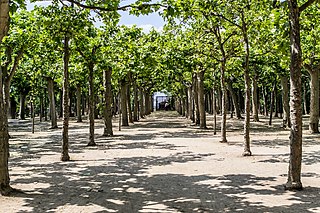
The plane tree grove in Darmstadt is part of the ensemble of the Darmstadt artists' colony on the Mathildenhöhe. It is a rectangular area about 125 m long and 40 m wide. Half-height plane trees are planted at even intervals and are pruned regularly. The complex is decorated with over 40 sculptures and reliefs by Bernhard Hoetger.
23. Alice-Denkmal
The Alice Monument, also known as the Alice Obelisk, is a monument in Darmstadt, Hesse, Germany. It stands north of the main Catholic church of St. Ludwig and commemorates Grand Duchess Alice, who married as a British princess in Darmstadt at the grand ducal court and campaigned for public health care there.
24. Orangerie
The Orangerie in Darmstadt, Germany, built around 1720, is a baroque palace building designed by the architect Louis Remy de la Fosse. Originally, it served as a winter shelter for citrus plants sensitive to the cold, which adorned the surrounding parkland in the summer months. The building was constructed with a one-storey hall open to the south, surrounded by single-storey rooms. The adjoining orangery park was designed under Ernest Louis, Landgrave of Hesse-Darmstadt by the Electoral Palatine court gardener Johann Kaspar Ehret from Heidelberg. The symmetrical Baroque grounds consist of three tiered garden parterres, wide axes with fountains and surrounding avenues. The sandstone gate of the former market palace forms the northern end.
25. Heilig Geist Kirche
The Roman Catholic parish church of the Holy Spirit is a modernist church building in Arheilgen, a district of Darmstadt, Hesse, Germany. The parish belongs to the pastoral area of Darmstadt-Mitte in the region of South Hesse in the Diocese of Mainz.
26. Stadtkirche
The Stadtkirche Darmstadt is the main Protestant church of Darmstadt and one of the parish churches of the city. It is also the oldest church building in the core city. The lily in Darmstadt's coat of arms still refers to the original consecration of the church to the Virgin Mary. In 1526, the church was denominational as an Evangelical Lutheran in the course of the Reformation. Its current architectural design results from reconstructions, expansions and destructions and reflects the city's history.
Wikipedia: Stadtkirche (Darmstadt) (DE), Website, Url, Heritage Website
Share
How likely are you to recommend us?
Disclaimer Please be aware of your surroundings and do not enter private property. We are not liable for any damages that occur during the tours.
